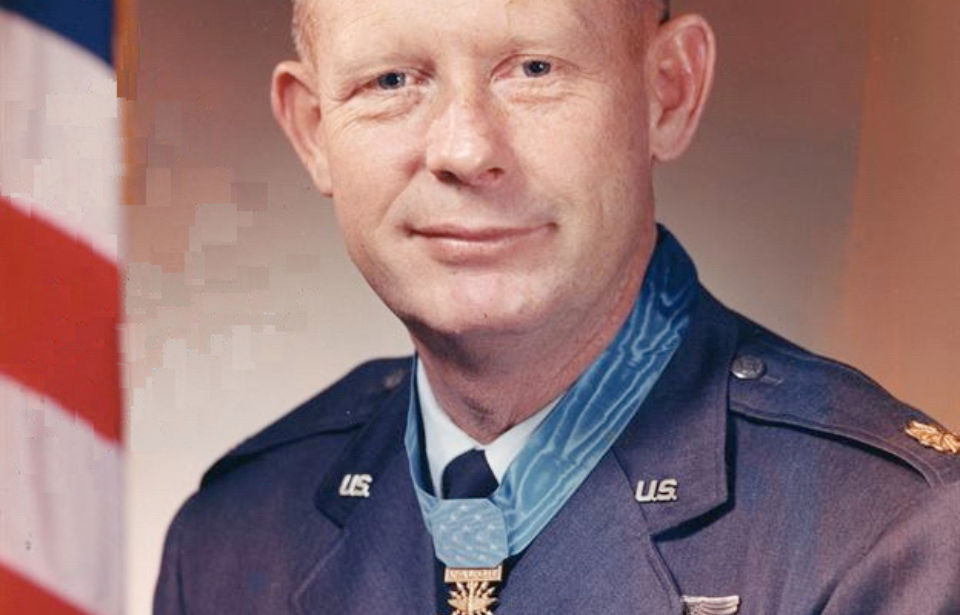During the Vietnam War, a number of US military service members distinguished themselves. Among them was US Air Force pilot Bernard Fisher, who risked his life to save a fellow airman during a mission to protect a Special Forces camp from North Vietnamese Army (NVA) troops. For his bravery, he was awarded the Medal of Honor.
Bernard Fisher’s early life and entry into the US military
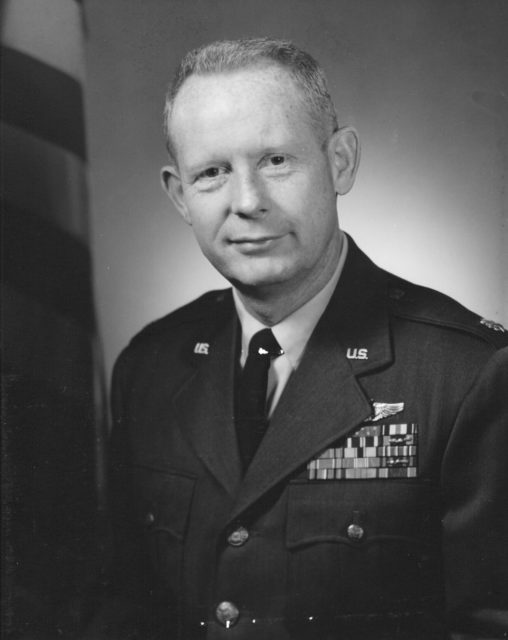
Bernard Fisher was born on January 11, 1927 in San Bernardino, California. The second of five children, his family relocated to Clearfield, Utah, where he spent the majority of his youth.
Between 1945-47, Fisher served in the US Navy, after which he enrolled at Boise State Junior College and served in the Idaho Air National Guard. In 1949, he transferred to the University of Utah in Salt Lake City, where he served as a member of the Air Force Reserve Officers Training Corps (AFROTC).
Before he could finish his degree, he was commissioned into the US Air Force. After completing pilot training, Fisher served as a fighter pilot in the Air Defense Command. In 1965, he volunteered for duty in Vietnam.
Medal of Honor actions in Vietnam
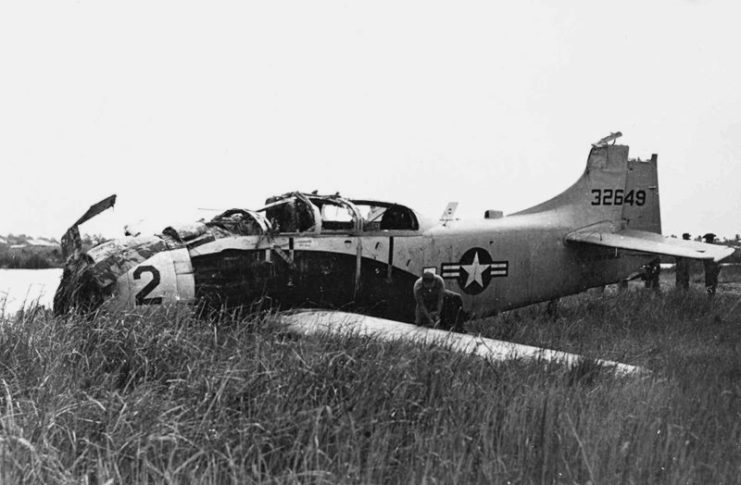
Bernard Fisher served in Vietnam between July 1965 and June ’66 as part of the 1st Air Commando Squadron, stationed out of Pleiku Air Base, South Vietnam. During this time, he flew 200 combat sorties in Douglas A-1E/H Skyraiders.
On March 10, 1966, Fisher had just taken off for a bombing and strafing mission when he was diverted to the Civil Irregular Defense Group (CIDG)-Special Forces camp in the A Shau Valley, Thừa Thiên Huế province, near the South Vietnam-Laos border. It was under attack by 2,000 North Vietnamese Army troops, who’d surrounded the camp and positioned themselves between it and the nearby airstrip.
Upon his arrival, Fisher found other A-1s circling over the dense cloud cover. He, his wingman and two other pilots flew through a hole in the ceiling, at which time they were informed the camp was being overrun by the NVA forces. The aircraft piloted by Maj. Dafford Wayne “Jump” Myers suffered ground fire to its engine, forcing him to make a crash landing. With his A-1 in flames, he sought shelter down an embankment.
Believing Myers was seriously injured and against the warnings from radio controllers, Fisher landed his A-1E on the debris-strewn airstrip, damaging his tail section in the process. He picked up Myers and successful took back off, his aircraft sustaining 19 bullet hits in the process. For his actions on this day, Fisher was awarded the Medal of Honor by US President Lyndon B. Johnson, becoming the first Air Force member to receive the medal for service in Vietnam.
Post-Vietnam service with the US Air Force
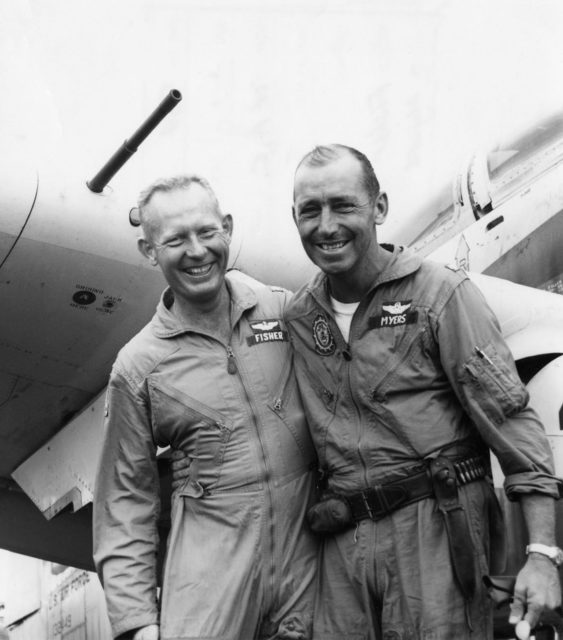
Following the Vietnam War, Bernard Fisher returned to the Air Defense Command, for whom he flew jet interceptors. During this time, he served with the 496th Fighter Interceptor Squadron at Hahn Air Base, West Germany and the 525th Fighter Interceptor Squadron at Bitburg Air Base, West Germany.
In October 1969, Fisher was named the Operations Officer with the 87th Fighter Interceptor Squadron at Duluth International Airport in Minnesota. He served in the role until June 1971, when be was promoted to Senior Air Force Advisor for the 26th Air Division at Gowen Air National Guard Base, Idaho. He held this role until his retirement on June 30, 1974. By that time, he’d reached the rank of colonel.
Upon his retirement, Fisher had received a number of military honors. Along with the Medal of Honor, he was also the recipient of the Silver Star, a number of Air Medals, the Distinguished Flying Cross, the Legion of Merit and two Meritorious Service Medals, among many others.
Bernard Fisher’s later life
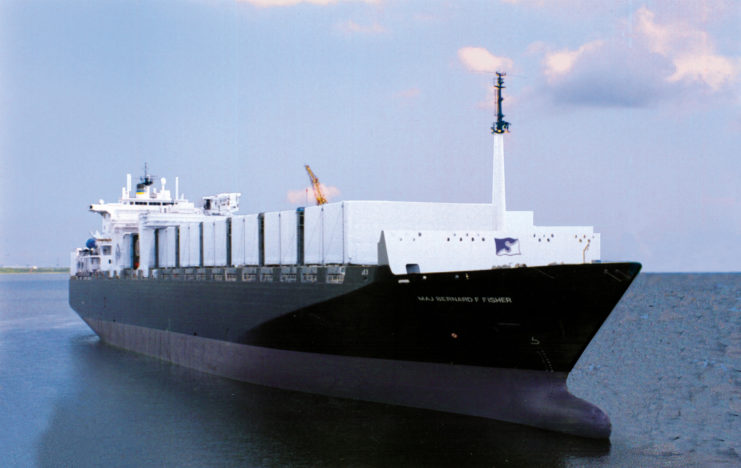
Following his retirement, Bernard Fisher and his wife moved to Kuna, Idaho, where they ran a farm that grew alfalfa and corn seed. He unsuccessfully ran a campaign to become the governor of Idaho in 1981, and was inducted into the Gathering of Eagles in both 1985 and 2005. The program began in 1980, when World War II veteran Brig. Gen. Paul Tibbets spoke to students at the Air Command and Staff College at Maxwell Air Force Base, Alabama.
On August 16, 2014, Fisher passed away at the age of 87 and was laid to rest at Idaho State Veterans Cemetery. By the time of his death, he’d be afforded a number of honors, including having a Military Sealift Command vessel named for him, the MV Maj. Bernard F. Fisher (T-AK-4396). The civilian-owned vessel supports US Army, Defense Logistics Agency, Navy, US Marine Corps and Air Force operations as part of Maritime Prepositioning Ship Squadron Three.
More from us: Theodore Roosevelt IV: Vietnam War Veteran, Activist and Environmentalist
Want War History Online‘s content sent directly to your inbox? Sign up for our newsletter here!
The A-1E Skyraider that Fisher flew on the day he rescued Myers was later restored and is currently on display at the National Museum of the US Air Force at Wright-Patterson Air Force Base, Ohio. The detachment of the AFROTC he was a member of while attending university, Detachment 850, has been nicknamed the “Skyraiders,” after the late colonel.
